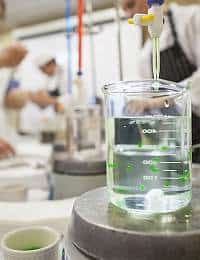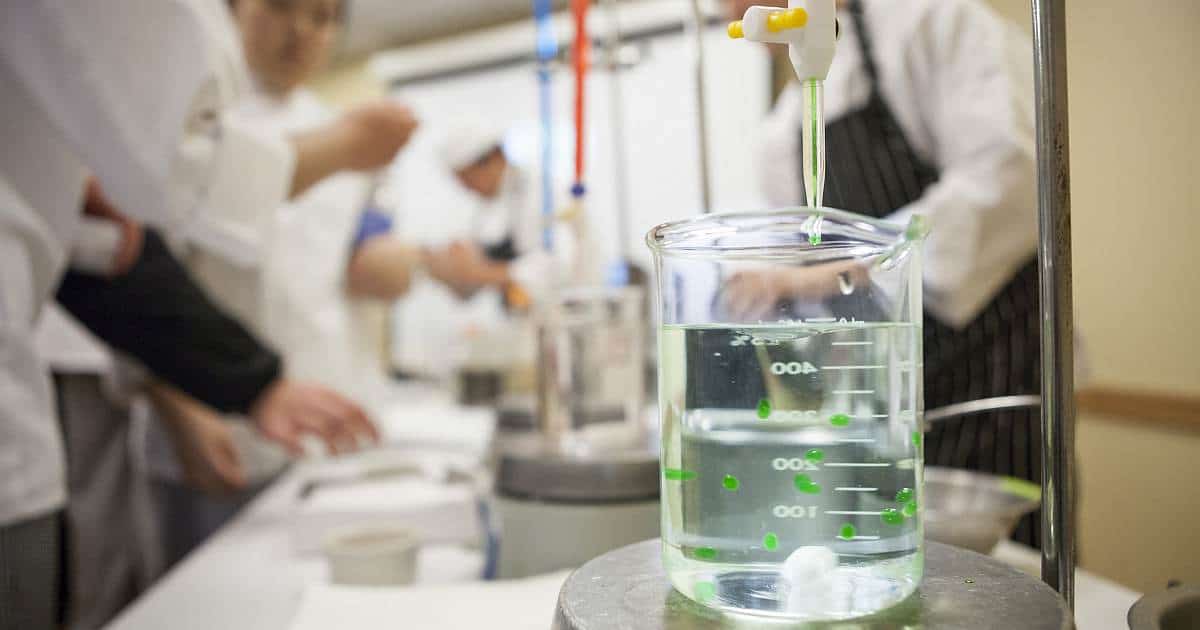
Do you like ice cream? Maybe chocolate milk? Gummy bears? Okay, maybe something a little healthier like a salad—with your favorite dressing? Do you ever wonder how those gummy candies are gummy? Or how the chocolate milk and ice cream coat your mouth oh so decadently, or why salad dressing coats each little leaf of lettuce? Well, the source of those delicious aspects stems from the addition of gelatin, gums, and stabilizers.
Gelatin
Gummy bears are one of my favorite movie night snacks, they are just so satisfying to me! The main function that causes this gumminess is gelatin. Now…here’s where things get a little weird. I must tell you that gelatin is derived from animal origins; not the delicious pork chop or T-bone you may be imagining, but collagen to be exact. Collagen is a soft protein found in an animal’s connective tissue—the stuff that connects bones, tendons, muscles, and skin. All the scraps of the animal butchering process that are left behind—like, ears, hooves, and skin—are used for collagen extraction. Don’t worry, this process has some history behind it, and modern practices yield a completely pure form of gelatin that is free of any impurities. This pure form of gelatin is refined and dried into either sheets or a powder at different strengths; these strengths are known as “bloom.” The difference in bloom is basically the strength of the gelatin. Some products that have gelatin are marshmallows, Jell-O, puddings, yogurts, cream cheese, and frostings.
In class, we investigated the amounts and strengths of gelatin extracted from different origins of collagen—fish, pork, and chicken. Also, we looked at the various thermo-reversibility temperatures of gelatin in different applications.
There are plant-based gelling gums and thickeners too, like xanthan, carrageenan, and alginates.
Xanthan Gum
The workhorse of the food processing and other industries is xanthan gum. Xanthan gum is derived from the fermentation of a plant-loving bacteria. Since 1950—when xanthan was discovered by a USDA scientist—it has been used for thickening all types of manufacturing processes. It is so widely used for its range of viscosifying properties and can hold up at various pH levels and temperatures.
Xanthan is used to thicken products like soups, sauces, salad dressings, and even toothpaste and some cosmetics. It is also used a lot in gluten-free baking as its gelling properties can mimic those structural aspects of the absent gluten strands. Just be careful if you’re using xanthan to thicken when cooking; if overused, it can yield mucilaginous or synovial slimy textures. But if used properly, xanthan takes the cake—gluten-free that is!
We investigated the hydration and viscosifying properties of xanthan gum through different methods of dispersion and its effects in systems of varying pH and temperatures, and how it withstands different amounts of shear or physical force put on the system.
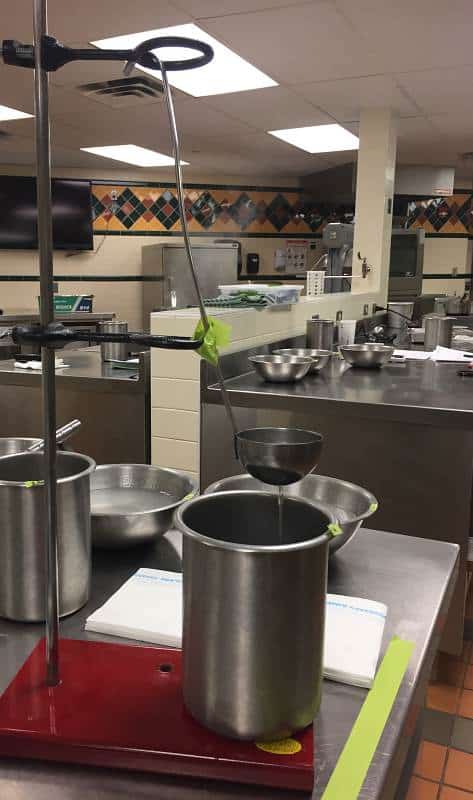
Alginates
The sea gives us great bounties of fish, bivalves, urchins, and crustaceans that we as chefs love to utilize to create delicious dishes, but let us not forget our photosynthetic buddies like seaweed that also aid us greatly in the modern kitchen. Alginates are another form of plant-based thickening agents, derived from drying the liquid from boiled brown seaweed. Some of our favorite foods like olives with pimentos and cherry pie fillings are made using alginates. That little pimento inside the olive is a puree of pimentos that are then gelled with either gelatin or a gelling agent like alginates and inserted back into the olive! And let’s not forget cherry pie. Alginates are used to make spheres of cherries in pie fillings, but don’t feel bamboozled—these spheres of cherries are made from cherry puree that utilizes bruised or misshapen cherries, so nothing goes to waste! Some fast food onion rings are made of onion pieces that are restructured into rings using alginates. Alginates are also used in ice creams to prevent the formation of ice crystals so that every bite we take is as creamy as the one before! Yes, is may feel like we are living in the matrix where things are not as they seem, but don’t worry, the thickening powers of seaweed-extracted alginates have been used for centuries! So, don’t think that it’s just “the man” pumping our food with chemicals. Everything is a chemical—heck, even our own bodies are composed of chemicals!
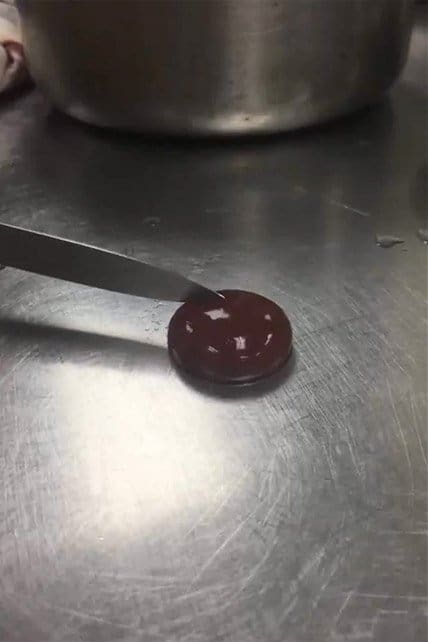
Other seaweed-derived thickeners like carrageenan and agar have been used since ancient times as well. Today, types of carrageenan are used in the wine- and beer-making process to remove/clarify the beverage from impurities, a process known as finning. Another common use of carrageenan is to suspend cocoa particles in chocolate milk so you cannot miss a lick of the chocoholic goodness!
In the culinary science kitchen, we used alginates along with calcium ions to do a process called reverse- specification where we mix sodium alginate in a water bath and drop frozen spheres of fruit purees that contain calcium lactate to form caviar made of sweet and tart fruits like passion fruit, hibiscus, and pineapple!
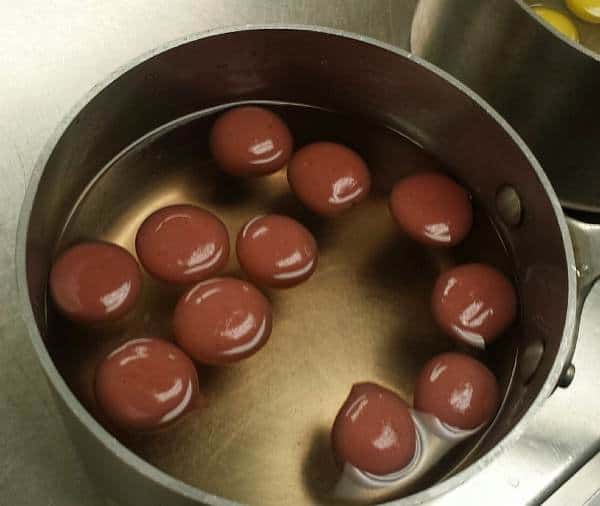
Methylcellulose
While methylcellulose might sound scary, it’s gelation properties are pretty cool! Here we have yet another plant-derived thickener, thinner, or stabilizer. However you want to categorize it, methylcellulose does something the previous gels I’ve talked about can’t—it gets thicker when it is heated and liquefies as it cools! It falls into a category of gels known as thermo-reversible gels, meaning it forms a gel at one temperature but can change to a liquid state at another. Usually, thermo-reversible gels like gelatin turn from a solid to a liquid when heat energy is applied. Well, methylcellulose does the exact opposite. It is used in manufacturing some food items like, for example, oven or microwavable chicken pot pies. When the pot pie is heated, the liquid center becomes a more solid gel to prevent it from boiling over, but once heat is removed, the center turns back into a liquid! Pretty cool, right? Another interesting recipe that can use the properties of methylcellulose is “Hot Ice Cream” where an ice cream is served hot and begins to melt as it cools.
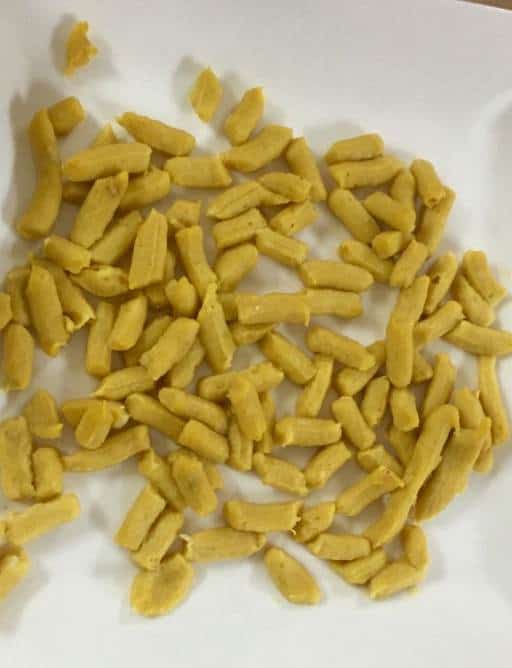
In class, we used the thermoreversible properties of methylcellulose to make hummus gnocchi. The gnocchi started out as just hummus combined with 37g of a 1% methylcellulose solution. Once piped into a poaching liquid, each little pillow turned into a solid gel that could be handled and eaten, but you much act fast—the type of methylcellulose we used begins to lose gelation at temperatures below 100°F!
Thickening agents for food manufacturing come in all shapes, sizes, and strengths. Hydrocolloid manufacturers create products for each specific purpose, so one size does not fit all. Like I said before, these chemicals have been used for centuries and are all derived from plants and animals. So while it may be hard for us to pronounce some of the names on a label, we shouldn’t be afraid of the components that give our favorite food products the body and characteristics we love!
Come back and check out my blog soon when I will be posting about some long-term fermented processes we’ve been working on in the culinary science kitchen.
By Walker Alvey
